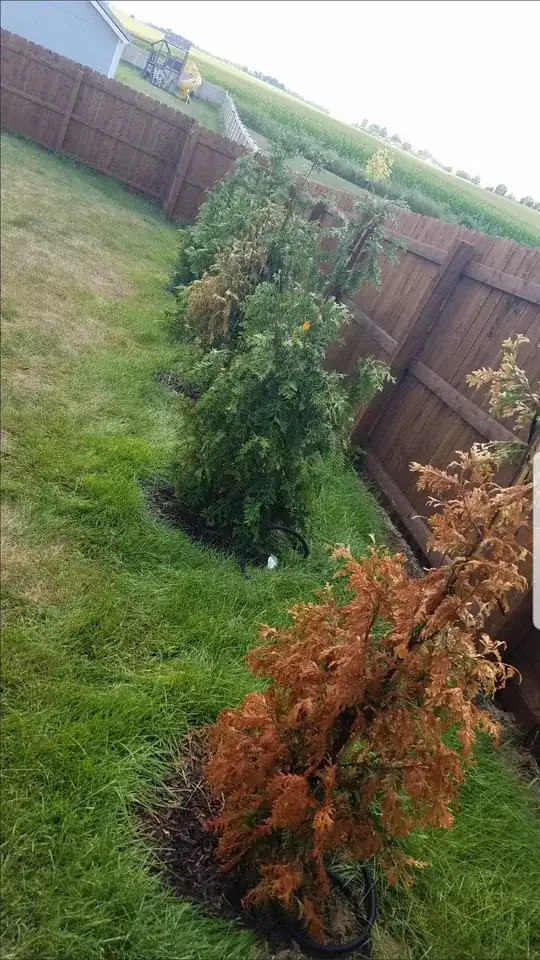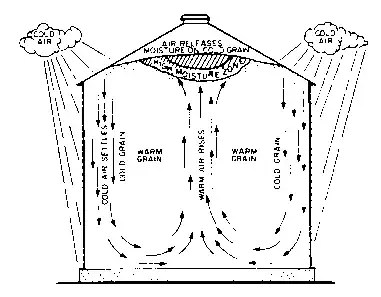I'm assuming your maize is "field corn," which is used as a grain, not "sweet corn," which is eaten as a vegetable while the kernels are still juicy. (Field corn can be eaten as a vegetable, and historically it was, but I understand it's not very enjoyable to a modern palate.)
How long can I store my harvest?
It varies, based on a lot of factors. The most important is that the corn must be dry enough to prevent the growth of mold and other microbes. That means you need to get it that dry, and keep it that dry. Temperature is another factor; at cooler temperatures, you can get away with wetter corn. See the advice below (based on usual growing conditions in the US's Corn Belt region).
In northern corn growing areas, the upper limit in narrow cribs (4 1/2 feet) is about 25% moisture in the grain. If late fall and winter are so damp that grain does not dry, spoilage will begin with the onset of warm weather in the spring. In the central Corn Belt where cribs are wider in order to handle higher yields, the safe limit is about 20%. Corn should be down to 18.5% by March 1 to avoid spoilage with the onset of warm weather. (source)
So, you can probably store your corn over the winter. Whether you can store it through the spring once the weather warms up depends on if it's dry enough, and whether you can keep it dry. That will depend on what kind of storage environment you have, and it will also depend on your local climate. Try to find a maize-growing guide for your area; it should have specific recommendations about local weather patterns and timing.
Another factor is vermin. Rats, insects, and whatever other wildlife you have in your area that eats corn. If you can't keep them out of your corn storage, then the answer to "How long can I store my harvest?" is "as long as it takes for the vermin to eat it all." Realistically, you will lose some of your crop over time to vermin.
This source says that corn can have a shelf life of up to 25 years, if stored and dried properly. But, "stored and dried properly" probably assumes state-of-the-art electronic monitoring of temperature and humidity levels, mechanical ventilation and drying for when the humidity gets too high, and no rats or other grain-eating critters.
Can I sun dry my harvest with husk and kernel intact?
Yes. Maize is usually left in the field to get as dry as possible. It can be left standing, or sheaved and shocked (more details below).
It was important to allow the ears of corn to dry on their stalks in the field for as long as possible, but still harvest them before wind, rain, or snow might blow down the mature plants. (source)
Corn that will be harvested and stored on the ear should be allowed to dry in the field as long as weather is favorable and stalk strength is adequate. (source)
It depends on the weather. If the weather allows, you can allow your maize to dry out in the field. But if you wait too long, you can lose your crop. Keep an eye on the weather forecasts, use your judgement, and hope for the best. Again, a maize-growing guide written for your local area will be your best friend.
In modern times, a combine harvester (or just "combine" for short) is usually used to harvest the cobs and strip the kernels from the cob, all in one step. Then the kernels are stored in a grain bin or silo. From your question, I'm guessing you won't be using a combine.
If you are harvesting without a combine, you have some options. One is to cut the stalks at the base, bundle them together into sheaves, then arrange the sheaves together into shocks. The lowest-tech way to do this is by hand, with a bladed hand tool like a corn knife, scythe, sickle, or machete. There is also mechanical harvesting equipment that does this (mechanical pickers, reaper-binders). "Shocking" is a method of arranging the sheaves together so that the grain stays off the ground, and has adequate air flow so it can dry. In this way, you can temporarily store your maize out in the field. Eventually you will want to move it to longer-term storage.
 (image source)
(image source)
Another way is to let the maize dry standing, then harvest it and bring it directly to a corn crib for storage and further drying. The corn is not usually dry enough at this point to just store it and let it dry passively; you probably need to add some mechanical ventilation. Also, if the corn is left standing without being sheaved and shocked, some of it will fall over, and you will lose some grain to rot.
The corn crib is a traditional storage method for maize. The kernels are left on the cob, and the cobs are stored in a corn crib. The job of the corn crib is to allow adequate air flow, so the kernels don't rot. Historically, a corncrib was basically a barn, but with air gaps between the sideboards for ventilation.
A corncrib was built of heavy lumber with boards, nailed on as slats, with narrow gaps between them. This allowed a natural air circulation for drying ear corn. Stout wooden bracing within the interior gave stability to the building and supported the weight of the harvest. It was necessary to store corn on the ear to keep the kernels from retaining moisture and spoiling. Dampness caused corn to rot or mold, making it unfit as livestock feed, or to sell. The roof of a corncrib was covered with wooden shingles or sheet metal, to give protection from the weather. (source)
There are lots of different styles of corn crib. A common one in more modern times is a round shape with conical corrugated metal roof, and metal mesh sides. Some modern crib use fans and/or dryers to keep the air flowing and the corn adequately dry. You can see examples of different styles of corn crib here and here.
 (image source)
(image source)
Can I store this sun-dried harvest with husk and kernel intact?
You can store it with the kernel intact. You can leave the kernel on the cob for storage, or you can remove the kernels from the cob and store the kernels in a grain bin as I mentioned earlier.
Wikipedia says the husk can be left on, but most other sources disagree. This source says the husk should be removed as much as possible.
During harvest, be sure that husks are removed as much as possible without generating too many loose kernels and minimize stalk pieces, weed seeds or plant fragments and other foreign material that can interfere with airflow once it’s placed in the crib.
Every image I found of corn being stored in on the cob backs that up. One image showed ears with maybe 1/4 of the husk still on; every other image showed them without any husk. The husk is going to hold moisture and restrict airflow. Leaving them on seems like asking for trouble. Removing the husk is called "shucking" if you want to research different methods.
Further Reading
I tried to provide a rough overview of how maize can be harvested and stored, but there is a lot of science and knowledge that goes into making good decisions about how to handle a crop. I hope you will seek out and read additional sources. Here are a few recommendations:
- Guidelines for Harvesting and Storing Ear Corn in Kentucky. This article has excellent, specific advice, from how to tell if your grain is ready to harvest, to what to do if you have to harvest it while it's not fully dry.
- This article also has good details: Corn Drying and Storage Tips for 2011
- If you will be using old-fashioned and low-tech methods, who better to imitate than the Amish? This source has some information. I had a hard time finding other online sources on the topic. Actual guidelines for how to grow and harvest corn the traditional Amish way are probably all in hardcopy. They may be available to borrow through a library.
- This article: Harvesting Corn: What Grain Moisture Should I Harvest Corn At? has a good discussion about how to decide when to harvest your corn.
- Native Americans invented corn, so they have many traditional methods that would be worth exploring. I would have incorporated more of them into this answer, but honestly, it didn't occur to me until I was almost done writing it. This article, Sun-Drying: A Traditional Native American Method of Preserving Food seems promising. Also, I'm pretty sure I've seem pictures of corn hung up to dry while still in the husks, perhaps with part of the husk braided together to make bundles. That would be worth looking into.
- Find a maize-growing guide tailored to your local area. Best practices for harvesting and storing maize in Wisconsin will be different from best practices in Kenya, or India, or Kazakhstan, or wherever, because the weather patterns and local pests are different.
Note: I mostly used the US terminology here, because that's what I'm familiar with and most of my sources used it. So everywhere I said "corn," I meant "maize" rather than "any kind of grain" or "a kernel."

